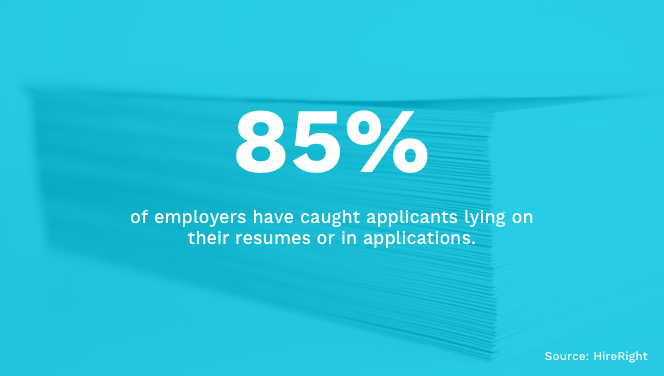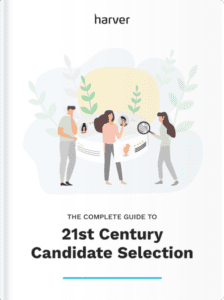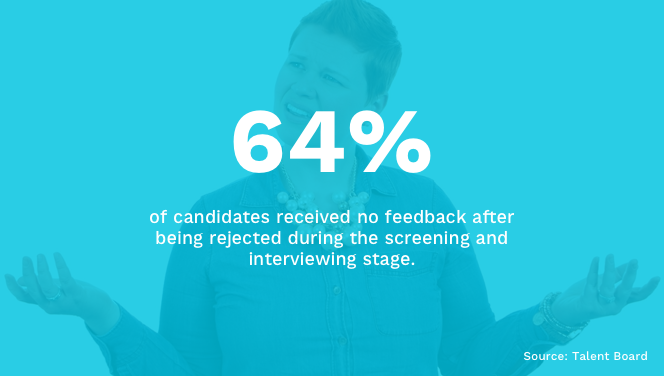You’ve posted a new job listing and the applicants are pouring in. You’re getting lots of strong candidates and you’re excited about your prospects, but weeding through the pile of applicants can quickly feel overwhelming.
According to just over half (52%) of talent acquisition leaders, identifying the right candidates from a large pool of applicants can be the hardest part of recruitment. Knowing how to shortlist your applicants can make this process easier.
How are you supposed to select the right candidates to focus on? Which ones should be called for an interview?
Let’s find out!
What’s in?
- What is shortlisting?
- Why should you create a shortlist?
- How to build a solid shortlisting process
- Determine your criteria.
- Decide a shortlist maximum number.
- Try blind applicant screening.
- Eliminate applicants who don’t have the criteria you’re looking for.
- Screen candidates in, not out.
- Try assessments during the initial application phase.
- Conduct a screening interview.
- Give your candidates a score.
- Let candidates know if you’re not moving forward.
Like what you see?
Don’t miss out. Subscribe to our quarterly digest to get the latest TA and TM resources delivered right to your inbox.
What is shortlisting?
Shortlisting is the process of identifying the candidates that meet the criteria laid out in the job listing. They’re the candidates that you want to move forward with in the recruitment process, most likely by having an initial interview or otherwise moving on to the next stage of the recruitment funnel.
In other words, you’re creating a “short” list of candidates you want to talk to.
Why should you create a shortlist?
The shortlisting process helps narrowing down your pool of applicants feel less overwhelming. It also sets standards for you and your talent acquisition team to look at in determining who the right applicants to talk to are.
Your shortlist can also help you identify how on-target you are with reaching your ideal candidates. If you’re struggling to find applicants that meet your shortlist criteria, it might be a sign that you’re not posting your job listings in the right places––or that your expectations are too high for the position you’re looking to fill.
Overall, shortlisting makes the hiring process more manageable and helps you speed it up.

A well-thought-out shortlisting process will help you identify employees with skills that you really need.
How to build a solid shortlisting process
Sure, a shortlist sounds great––but just knowing the definition doesn’t help narrow down your growing pool of candidates! Here’s how you can build a shortlisting process to make sure you’re interviewing the right candidates.
1. Determine your criteria.
Before you even post your job listing, you need to identify the “must-haves” and the “nice-to-haves” for the role you’re hiring. These qualifications will become the criteria for your shortlist.
Your list of must-haves will be the minimum qualifications for the candidates that you interview, while the nice-to-have list might get that applicant some bonus points (but not necessarily disqualify any applicants who don’t meet those criteria).
If you’re not sure what your criteria should be, take a look at the individuals already operating in that position, or if you’re replacing someone, turn to that person. Ask them what skills they believe are most important to their job. What qualifications would they want to see new hires have?
Discuss the criteria with the hiring manager for the role in question to ensure you’re selecting the right candidates for the shortlist.
2. Decide a shortlist maximum number.
The point of a shortlist is… well, that it needs to be short. If you’re not cutting down your applicant pool, creating a shortlist doesn’t really help! That’s why you need to set a list maximum.
In other words, you need to determine how many candidates you’re going to move forward with. This might be a set number or it could be a percentage of applicants. You can also find this number by estimating how many candidates you’ve interviewed in the past out of everyone that applied for a certain role.
Don’t worry too much about this shortlist number. If you end up having more highly-qualified candidates, interview them. Likewise, don’t waste your time filling up your shortlist if you don’t have enough candidates who meet your minimum qualifications.

This can serve as a benchmark, however, you always need to analyze your own process. If you’re inviting more than 12% of applicants to interviews, it can mean that your shortlisting criteria aren’t strict enough but also that you have many qualified candidates. That’s why a closer look at your applicant-to-interview rate is necessary.
3. Try blind applicant screening.
Now that you know what qualifications you’re looking for and the number of candidates you want to move forward with, you’re ready to start selecting applicants! This is the tough part.
When you start to look through applications, you might feel some natural pull towards certain candidates. While this subconscious bias is pretty common, you want to avoid it as much as possible. If you’re considering applicants for anything other than the criteria you’ve established, you might end up with the wrong team member.
Try a blind applicant screening where you remove all demographic data from resumes and applications. By focusing on the relevant criteria––and only the relevant criteria––you can reduce hiring bias and prevent it from creeping into your hiring process.
4. Eliminate applicants who don’t have the criteria you’re looking for.
You listed your “must-haves” for a reason. If a candidate doesn’t have the minimum criteria you’re looking for in someone you want to interview––it’s time to cut them. Don’t waste your time with applicants who don’t meet your needs.
If you’re expecting a high volume of applicants, you can automate this process. Using keyword identifying tools, you can automatically weed candidates who don’t meet your basics out.
However, if you’re going to go down this route, just be careful that your automation process is working appropriately. You don’t want to accidentally remove any qualified candidates! Be sure to do a quick comb through your rejected applicants to make sure you’re not overlooking a strong candidate. That way, you can also optimize your automated resume screening process for the future.

5. Screen candidates in, not out.
Screening candidates in versus screening them out might not seem like a big difference. But rather than just looking for candidates that don’t fit what you’re looking for, see what applicants have transferable skills. Who seems like someone who will commit to your business and that you can rely on?
If you’re only looking at who checks all your boxes, you might end up with candidates who seem great on paper but aren’t willing or prepared to grow with your organization. By screening candidates in, rather than just screening out, you can be sure to interview stronger candidates.
You should also look at your group of candidates holistically. When deciding whether or not to screen a candidate in, consider if there are other applicants like that person. Creating a diverse candidate pool can give you a stronger pool of interviewees––and increase the chances you hire a diverse employee.
Stop guessing,
Start data-driven hiring.
Learn how you implement a modern candidate selection process, that is: streamlined, experience-driven and backed by data.

6. Try assessments during the initial application phase.
Candidate assessments usually come later in the recruitment process, but adding them early on can help you get to know your applicants better in the beginning––especially when you’re expecting high volumes of applicants.
Assessments also come in handy if there is a specific skill you need to score applicants for. For example, if your must-have criteria are very specific, an assessment can help you understand who really has those skills versus who just listed them on their resume.
You can add assessments during the application phase or wait until your candidates have already applied. Assessments also come in handy if you find you have too many candidates meeting your list of criteria. Have applicants you’re on the fence about complete some assessments to see if they’re a good fit or not.

Recruitment technology including pre-employment assessments can make screening faster, more accurate and more efficient.
7. Conduct a screening interview.
Phone screenings are incredibly common during the beginning phases of the hiring process. In fact, you probably already use them! While initial phone interviews are efficient for some, especially for low-volume roles, you can also screen candidates with a video interview.
Video interviews allow applicants to respond to prompts in self-recorded videos. This gives you the opportunity to hear from large volumes of applicants without needing to invest time to independently screen them all.
Video interviews do have some drawbacks (like that you can’t ask follow up questions) but they’re a great way to get to know your applicants beyond just their resume and application at the very beginning of the hiring process.
8. Give your candidates a score.
Having solid cut-off points can prevent you from wasting your time with candidates who just aren’t a fit. However, it’s unlikely that all of your candidates will meet all your criteria. You can still identify your strongest candidates by giving them a score.
The M.E.P. system (which stands for Mandatory, Essential, Preferred) is one way to score your candidates. Here’s how it works:
- Rank your list of criteria and qualifications as mandatory (absolute minimum requirement), essential (a very important skill to have), or preferred (a nice to have skill, but not necessary).
- As you go through applicants, allocate 1 point for every M a candidate has, 2 for every E, and 3 for every P.
- At the end of each candidate application, give them a total score.
- Candidates with the highest scores are your strongest candidates.
This kind of scoring process also helps you identify a candidate’s strengths and weaknesses so you can bring them up during the interview process and have a meaningful conversation early on.
9. Let candidates know if you’re not moving forward.
It’s always good to let candidates who don’t meet your qualifications know they’re not moving forward in the interview process––especially if you’ve done further screening like a phone interview or asked them to complete assessments.
If you’re still in the application screening phase, an email is usually fine for alerting candidates. You can also follow up with a phone call if you only had a small number of applicants.
It’s always helpful to the candidate to let them know why you’re not moving forward––whether it’s that there were a large number of strong candidates or if they didn’t meet certain criteria. Leaving off the relationship on a good foot can encourage them to apply again in the future, or, at the very least, leave them with a positive impression of your brand.

Providing candidates with at least basic feedback whenever you have the capacity to do so improves your candidate experience.
Use shortlisting to interview the best candidates.
Don’t allow a large number of applicants to derail your hiring process. When you know how to narrow down your candidate list to focus on your strongest applicants, you can ensure you’re not overlooking anyone that could be a good fit for your organization.
Let’s recap how you can find a shortlisting process that works for you:
- Identify your main criteria and what is most important in the candidates you choose to interview.
- Determine how many candidates you want to move to the next phase with.
- Consider using blind screening to eliminate bias.
- Cut out applicants that don’t have the must-haves you’ve outlined and use automation to make the process easier.
- Screen in, not out and look for transferable skills.
- Use assessments to measure specific skills important to your application.
- Use phone or video interviews to get to know your candidates beyond just what they’ve written on their resume or in their application.
- Give your candidates a score with the M.E.P process.
- Let candidates know if they’re not moving forward.
As you become more familiar with what you’re looking for in candidates, the hiring process will become easier and easier!
Stop guessing,
Start data-driven hiring.
Learn how you implement a modern candidate selection process, that is: streamlined, experience-driven and backed by data.



